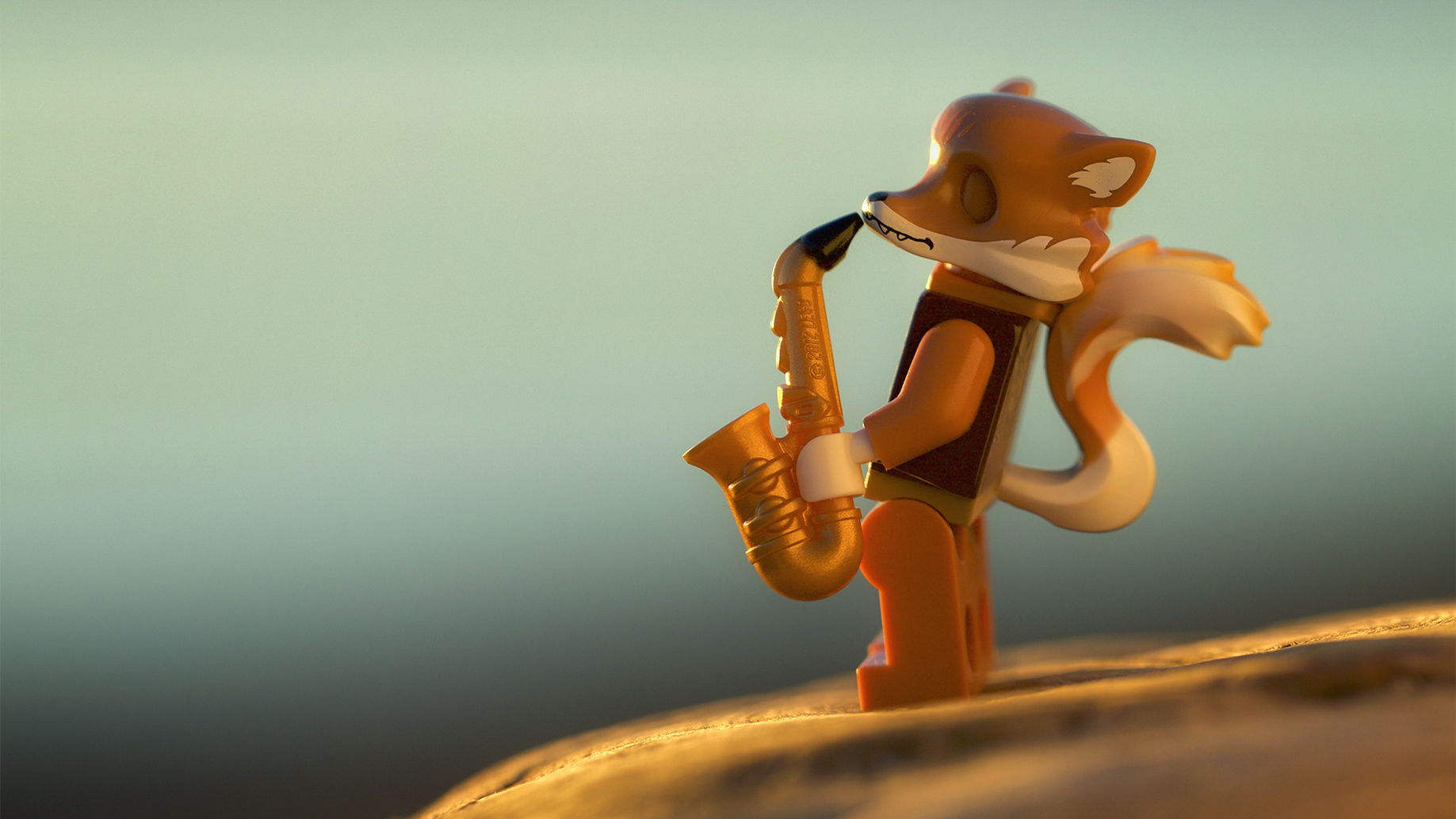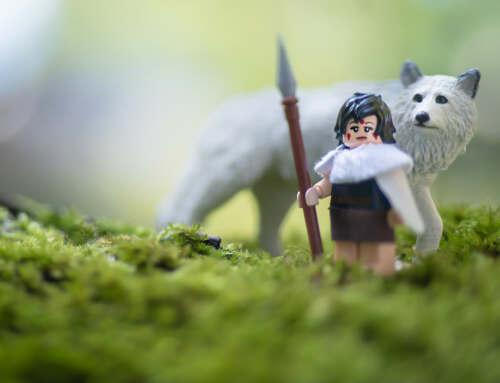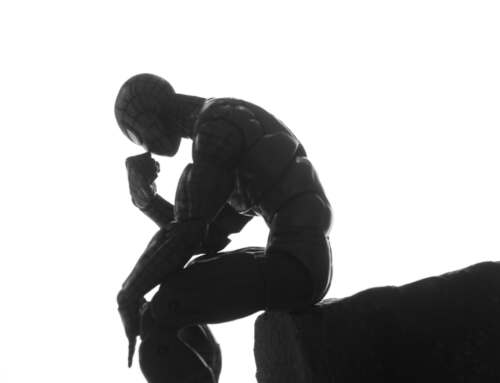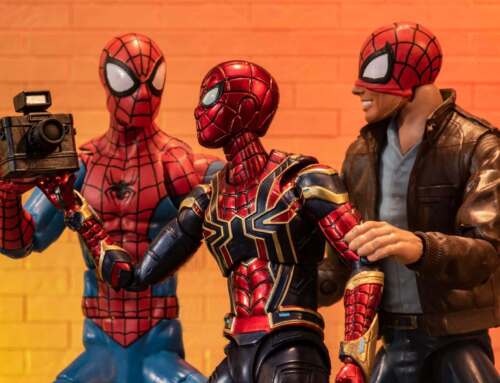Every outdoor photographer should have a reflector in their kit and know how to use it while shooting their toys. Why? Because when you shoot outdoors, you only have one light source – the sun, and it’s rarely where you need it. When you add a reflector to your kit you can achieve even lighting on your toy, fill in those deep shadows and eliminate that shiny plastic line so often seen in toy photography.
Reflectors are a main stay of portrait photographers, both outdoors and in the studio. They’re a cheap and easy device to bounce available light on your subject and fill in shadows and brighten the figure with a nice overall soft light. Basically, they make just about every lighting situation better for very little cost. In fact, for most toy photographers, you can make your own, or use any handy piece of reflective / white surface.
Unlike studio photographers, when you’re shooting outdoors you can’t control the sun’s position. No matter if you’re shooting in full sun, in the shade or with your toy backlit, there is usually some lighting problem that needs to be solved, and a little reflector does the trick very nicely. I know toy photographers who travel with small auxiliary lights, but pulling out a bounce card is often easier than setting up lights and produces a cheap and pleasing lighting effect. Any homemade bounce card can turn a difficult lighting situation into a success. I’ve seen one photographer pull out a business card to solve a lighting problem. I’ve seen another with small tepees made from fomecor that are set up to bounce light up onto the figure to fill in shadows. I use pieces of mat board that I’ve attached a silver reflective surfaces too; imagine a stiff piece of mat board that is white on one side and a reflective silver on the other. I usually stand these up with the help of a couple of rocks I always care with me or I hold the card in position. (When I’m shooting one handed, I thank the photo gods for image stabilization!)
Here are a couple of examples of photos I took with and without a bounce card so you can see how much a simple reflective surface can fill in those annoying shadows and make your post production work flow a breeze. These are unedited photos so you can see the full effect.
As you can see I like to shoot my mini figures with a lot of back light or in low light situations which often leaves a significant amount of the figure in shadow. By using a bounce card I’ve illuminated the figure as well as saved myself hours of post production work.
I hope you can see by this simple demonstration how useful this inexpensive tool can be to help you achieve your photographic vision. If you’re a studio photographer, you can also use bounce cards to create different lighting situations and maximize your studio lights. One advantage of being a toy photographer, is that there is nothing on the market that will work better than a bounce card you make yourself which leaves more money for what is truly important – the next great toy!
As always, happy shooting my friends!
~ Shelly
If you have any quick and cheap tricks that you use to maximize lighting outdoors or to make your photography easier, I would love to hear them!









I almost always use reflectors while shooting LEGO these days. With my camera I often get really close so this one works for me: take a thick piece of white paper, a 5 X 7 envelope works, cut a hole the size of your camera lens in the paper, then stick your lens through the hole – the white paper basically sticks on the front of your camera. It usually stays on and allows me to hold the whole camera/reflector in one hand.
My other hand is free to fight off snakes or whatever while I get that perfect shot!
Paul
@bricksaklboat
That’s a great idea Bricksaklboat! I think I will make a few modifications and see what I can come up with. I’ve also seen reflectors taped to the lens hood with great effect; especially to help bounce flash. I worry about you out there in snake and critter country. Stay safe while you’re taking those awesome photos!
Whoa, that’s awesome! I was wondering how to get the shot when you’re reflecting from the same angle you’re shooting.
Now you know! Have fun and go wild!
Great post Shelly! I was thinking about how to fix the lightning while shooting outdoors and boom, you wrote the post. your photos are always top notch and I can’t wait for more photo tricks you got in your sleeve. Thank you!
I’m really glad you liked the post. I never really thought of this as a photo trick, but it seems to have been well received. I’m not sure if I have any others, but if you have any topics you would like me to cover, please let me know. I’m always happy to help. 🙂
I like the esoteric stuff here, but I also really like the practical stuff too! I just bought a wireless remote shutter release for doing low light and long exposure. Guess I’ll be heading back to Amazon after seeing your before and after!
You do not need to spend money on this one, this is a DIY project. The size of reflectors that are on sale are completely the wrong size for toy photography. You will be better off heading to a craft store and purchasing what you need.
Yes, a wireless remote is a nice inexpensive toy to add to the tool box. Have fun with your new toys!
I use a lot white reflectors… when shooting indoor. I almost always carry a white reflector in my bag but almost never use it when going outside because I just can’t lie on the ground and hold both my camera and the reflector. Though I’d really like to use it more often. How do you do it? Are you able to shoot with only one hand? Or do you get someone else to hold the reflector?
(I think I should probably try bricksailboat’s trick)
Believe it or not I shoot one handed. If I can find a rock, or something to prop up the reflector with I will certainly use it. Like I said in the post, I thank the photo gods for Image Stabilization. I started really using the reflectors this winter after I edited my best of book. All the photos needed love, which easily could have been avoided if I had used a reflector. I still forget and kick myself, but it’s starting to becoming second nature.
If you look on line for macro tips and tricks you will find other DIY methods. The cut up plastic milk jug taped to the lens hood as another viable option. If you find a good solution for the two handed shooter who doesn’t have an assistant, please share!
I’ll definitely try to work something out as soon as I’ve got time so I can be ready for the summer and its long days 😉
I love reflectors … and strobes 😀
I’ll get to strobes later this year. They’re on my list of skills to master before Feb 2017. 😀